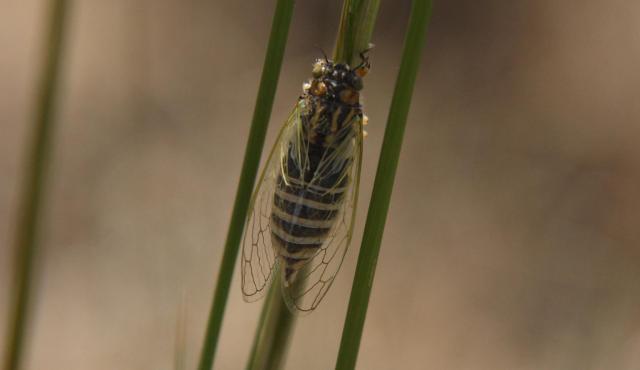

Smoky Buzzer
Myopsalta waterhousei
| Details | |
|---|---|
| Type | Invertebrate |
| Group | |
| Other Common Names | Grass Cicada |
| Biology | The female pierces plant stems and inserts eggs into the slit produced. Eggs hatch into wingless nymphs that drop to the ground and burrow beneath the surface. The lives of nymphs are spent underground. As they grow they shed their skin at intervals. Adult cicadas live a few weeks only. |
| Distinctive Markings | Antennae are small and bristle-like. |
| Taxonomy | |
|---|---|
| Phylum | Arthropoda |
| Class | Insecta |
| Order | Hemiptera |
| Family | Cicadidae |
| Genus | Cicadetta |
| Species | waterhousei |
Source: Atlas of Living Australia
Cicadas may be distinguished from other insects by specialised organs found on each side of their thorax for sound production and reception. There are approximately 200 species of cicadas in Australia.
| Interesting Facts | |
|---|---|
| Diet | Herbivore. Plant sap from eucalypts, native herbs and grasses. |
| Habitat | Inhabits native and exotic plants including tall trees, coastal mangroves, suburban lawns and desert shrubbery. |
| Native Status | Native to Australia |